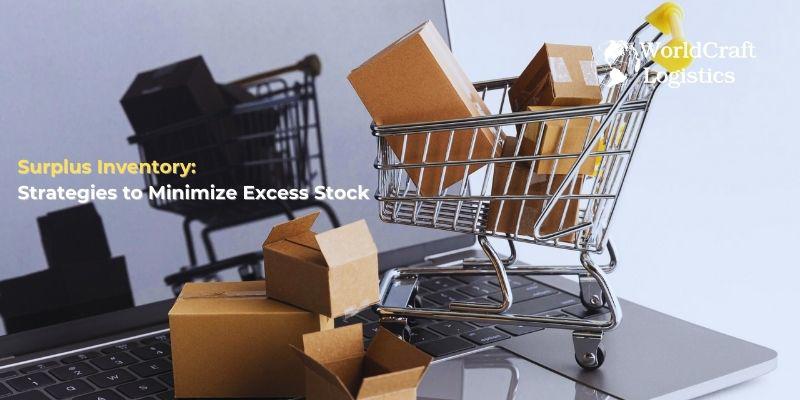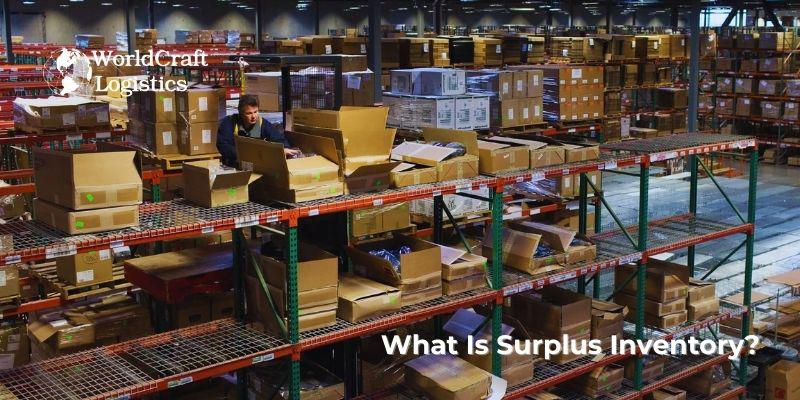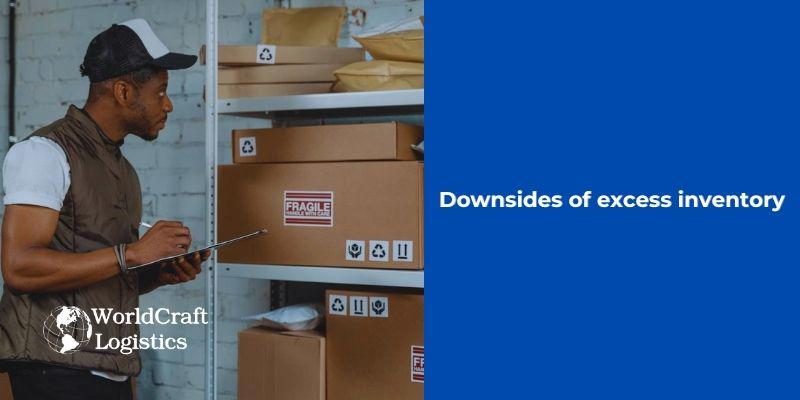
Starting June 1st, 2023 Our warehouse fee will be $0.65/cubic foot per month
In effort to lower the warehouse storage fee during inflation, we have went narrow aisle racking.This construction took us four months but the project is finally completed. With narrow aisle racking, we are able to drop storage by 24%.We as partners will go through this inflation together.
06/09/2024

Having unsellable stock in your storage can severely impact your revenue and contribute to increased shrinkage. This situation poses a significant risk, particularly in industries such as bars and restaurants, characterized by narrower margins and perishable products. Regardless of your chosen inventory costing method, surplus inventory remains a pressing concern demanding attention.
So, how can you effectively address this issue and identify its root cause? We'll delve into these questions and more, providing insights to help you optimize warehousing space and enhance bar profitability.

In layman's terms, surplus inventory signifies an abundance of stock. Certain companies deliberately maintain surplus inventory as a precautionary measure to cope with unexpected spikes in demand. However, more often than not, surplus inventory arises from excessive stocking due to inaccurate demand forecasts.
Occasionally, procuring a consignment with a slight surplus can prove beneficial, especially when anticipating seasonal sales surges. Nevertheless, habitual overstocking can swiftly evolve into a significant drain on resources.
Inventory incurs costs, occupying both physical space and financial resources for storage, sometimes leading to expenses associated with disposing of excess stock. Moreover, businesses dealing in perishable goods face the additional challenge of managing expiry dates.

Excessive inventory poses numerous challenges to businesses and is a cardinal sin in the realm of inventory management. Here's a breakdown of how it hampers your business's optimal performance:
Surplus inventory occupies valuable space in your storage facility that could otherwise be utilized for fast-moving products. Depending on the extent of excess inventory, it might hinder your ability to stock other items due to spatial constraints.
Maintaining excess inventory incurs overhead costs for storage. Any unsold items translate to financial losses, as they tie up capital that could be invested elsewhere. Moreover, there are additional expenses associated with handling and manual inventory management, ultimately driving up prime costs and eating into profit margins.
Excess inventory adversely impacts revenue streams in multiple ways. Firstly, it results in lost income from the stagnant inventory itself, particularly for wholesale goods that remain unsold. Secondly, there's the concept of opportunity cost, wherein these unsold items impede the sale of other products, further denting potential revenue.
Idle inventory depreciates over time, eroding its value and potential profitability. From an accounting standpoint, these items steadily decline in worth, translating to daily profit losses. Moreover, expired products necessitate a complete write-off, representing avoidable expenses that cut into overall profitability.

Numerous factors contribute to a business accumulating surplus items. While some instances stem from oversight in demand forecasting, others are influenced by external factors and socio-economic indicators.
Let's delve into forecasting errors. Inadequate methods, seasonal oversight, and a lack of market comprehension are primary culprits. Often, poor inventory planning results from inadequate tools. Fortunately, top-tier inventory management software exists to streamline tracking, organizing, and managing inventory and sales orders.
However, surplus inventory can also arise from factors seemingly beyond a business's control. Every product has a lifecycle, with demand naturally fluctuating. Additionally, complex supply chains across multiple locations can hinder centralized inventory management, resulting in excessive stock. In such cases, delineating roles and leveraging appropriate technology becomes crucial for effective oversight of large-scale operations.

Excessive stock poses significant challenges for businesses, making it imperative to circumvent such scenarios entirely. Below are several pragmatic approaches aimed at enhancing inventory management and mitigating the risk of surplus inventory.
Precise demand forecasting is imperative in curbing excess inventory. By leveraging more precise projections of SKU sales and their velocity, you can procure inventory precisely aligned with demand, thus mitigating the risk of overordering.
To refine your demand forecasting, consider employing inventory forecasting tools to meticulously monitor and analyze:
Past sales records
Seasonal patterns
Economic indicators of demand
Geographical or environmental influences
Macroscopic shifts in consumer behavior
Insights gleaned from these qualitative analytics empower you to foresee spikes or dips in demand, enabling strategic procurement and reordering measures.
Disruptions and backlogs in the supply chain can also contribute to excess inventory.
For instance, the COVID-19 pandemic triggered significant disruptions across global supply networks, amplifying the bullwhip effect. Retailers rushed to stock up on items highly demanded during quarantine, such as air fryers and athleisure wear. However, as restrictions eased and demand plummeted, businesses were left grappling with excessive stockpiles.
Therefore, even amidst unprecedented supply chain upheaval, maintaining smooth operations becomes paramount.
Merchants must uphold visibility across the supply chain and leverage automation to enhance efficiency. This ensures seamless inventory flow, mitigating the risks of backlogs and disruptions.
Overstocking remains the primary culprit behind surplus inventory. This issue frequently arises from concerns over potential stockouts, prompting businesses to order quantities exceeding actual demand. Similarly, enterprises may opt to preempt seasonal fluctuations in demand by accumulating excessive inventory.
To circumvent the pitfalls of over-ordering spurred by apprehension or ambiguity, enterprises ought to leverage inventory management software (IMS). By utilizing IMS to monitor inventory levels in real-time, businesses can access current data and gain a precise grasp of historical sales trends. Armed with this information, merchants can adopt a data-driven approach, steering clear of impulsive decisions.
Business enterprises must diligently steer clear of overstocking their inventory. Yet, in the event of an existing surplus, avenues to swiftly disperse excess goods from warehouses emerge, each varying in profitability. Below, we outline several liquidation strategies tailored to optimize the utilization of surplus inventory.

Optimizing surplus inventory sales is crucial for recuperating procurement expenses and restoring inventory turnover rates.
Begin by elevating product visibility and revitalizing marketing strategies to stimulate increased sales. Should these efforts prove ineffective, consider implementing discounts on surplus units or bundling them with high-demand items to craft compelling incentives for customers to purchase excess stock.
Everyone appreciates complimentary offerings – even if they're unexpected, the sentiment remains valued. Incorporating excess inventory as bonuses in purchases allows enterprises to pleasantly surprise consumers, enhancing their unboxing experience. Consequently, this tactic fosters allegiance and encourages recurring transactions.
Even if selling your excess inventory isn’t an option, don’t dispose of it just yet. Instead, consider donating it to a good cause.
Donating your unsellable inventory is a more sustainable solution to reducing excess stock – and it offers good returns in the form of tax benefits when tax season comes around. You can leverage partnerships with different charities, or use free services to donate excess inventory.
In the realm of business, stagnant products pose a significant risk. Are you grappling with inventory on the verge of expiration? It's imperative to promptly address this issue by liquidating it and salvaging whatever value possible. Additionally, proactive measures must be taken to prevent recurrence.

Without an efficient inventory management system in place, decision-making lacks crucial insights. Enhanced data accessibility diminishes the likelihood of inventory surplus.
Bid farewell to surplus inventory hindrances. By implementing a robust strategy, current overstock can be redistributed while future surplus can be curtailed. Through meticulous planning and employing appropriate tools, your business can effectively manage both frontend and backend operations, relegating stagnant inventory to a bygone concern. Don’t hesitate to contact us: Để lại SDT US
There exists a range of strategies for managing excess inventory, yet employing a robust warehouse inventory management system stands out as the optimal approach for monitoring stock levels. Here are six methods for dealing with surplus inventory:
Implementing bundled product sales
Reconfiguring and repurposing inventory displays
Initiating returns for refunds or credits
Liquidating surplus inventory
Consigning products to third-party sellers
Donating excess inventory to charitable causes
Having excess inventory can prove both advantageous and disadvantageous, contingent upon the nature of the stockpile. For food service enterprises, an abundance of inventory can be detrimental due to the limited shelf life and perishability of foodstuffs.
Moreover, there's the added expense of storage and heightened inventory carry costs, which can adversely impact the bottom line. Nevertheless, maintaining safety stock isn't entirely unfavorable, particularly when aiming to avert stockouts.
Navigating the fine line between maintaining safety stock and overstocking is crucial. Employing a robust inventory management system enables businesses to discern when they're accruing surplus inventory.
While surplus inventory can mitigate stock shortages, mismanagement thereof can undermine business profitability. Excess inventory can impinge upon profitability through:
Diminished cash flow
Squandered storage capacity
Augmented warehouse management expenditures
Adhering to prudent inventory management protocols is essential for mitigating the adverse effects of excess inventory on business profitability.
SEO
Digital Marketing/SEO Specialist
Simon Mang is an SEO and Digital Marketing expert at Wordcraft Logistics. With many years of experience in the field of digital marketing, he has shaped and built strategies to effectively promote Wordcraft Logistics' online presence. With a deep understanding of the logistics industry, I have shared more than 500 specialized articles on many different topics.

Education
01/05/2025

Education
02/18/2025

Education
01/01/2024

Education
08/28/2024

Education
11/13/2023